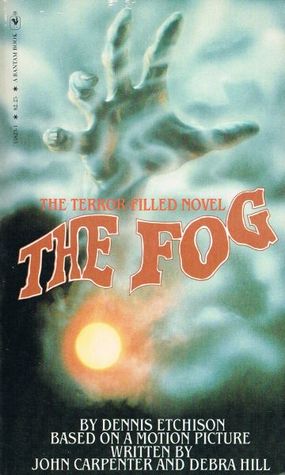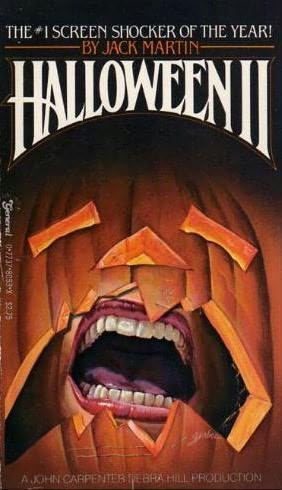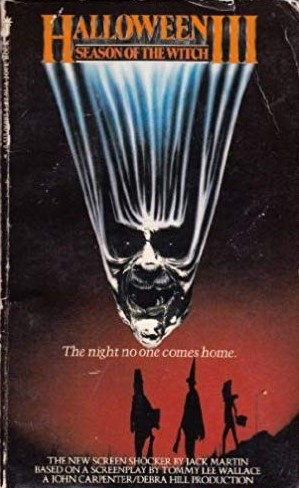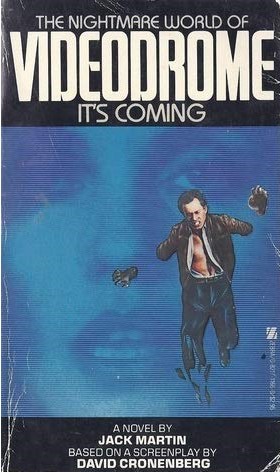Movie novelizations are among the most thankless forms of writing that exist. Crummy pay, unrealistic deadlines and widespread critical disinterest are among the pratfalls awaiting those who write such publications, yet quite a few cash-strapped luminaries have nonetheless tried their hand at novelizing movies. In the horror genre respected names like Ray Garton, Christopher Priest, John Skipp, Chelsea Quinn Yarbro, Pat Cadigan, John Shirley, K.W. Jeter and William Kotzwinkle have all done time as novelizers, as has the late Dennis Etchison.
Etchison was a highly renowned writer of short stories (collected in anthologies like THE DARK COUNTRY, THE BLOOD KISS and many others) and novels (DARKSIDE, CALIFORNIA GOTHIC, etc.), as well as a respected anthologist (the MASTERS OF HORROR series, CUTTING EDGE, etc). Yet as he readily admitted, he “had to eat,” and turned out a string of movie novelizations during the early 1980s that, in a downright profound irony, are now among his most famous works. HALLOWEEN buffs hold Etchison’s HALLOWEEN II and III novels in extremely high regard, and Stephen Romano’s B-movie pastiche SHOCK FESTIVAL includes several affectionate references to Etchison’s pseudonym JACK MARTIN, whose byline graces three of his  four novelizations.
four novelizations.
Etchison’s first novelization was 1980’s THE FOG. It was the only one of these books to be published under his own name, and that’s appropriate, as it’s far and away the best of the bunch. For that matter, I feel it’s one of Etchison’s best novels, period. Etchison was always at his best in short story format, yet in THE FOG he builds up an impressive flow and rhythm that his other novels rarely achieve.
The problem? Simply that the material Etchison was working with, namely an original screenplay by John Carpenter and Debra Hill, just isn’t that strong. THE FOG is widely acknowledged as one of Carpenter’s more problematic films, with a vaguely defined menace and lackluster narrative drive. This novel, unfortunately, doesn’t overcome those things.
The setting is Antonio Bay, a small California town engulfed by creeping fog that has the power to cause blackouts and blow out car windows. It seems Antonio Bay was formerly the sight of a leper colony whose inhabitants were massacred by the townspeoples’ ancestors, and now the ghosts of the dead are returning via the fog to avenge their deaths 100 years earlier.
What resonates is Etchison’s descriptive power (“The fog had encased this side of the house in an impermeable sac…the convolutions flattened against his window like the folds of a brain under glass”) and his elegant handling of the mundane realities of life in Antonio Bay contrasted with the supernatural menace confronting it. The latter is an Etchison trademark, and his voice registers loud and clear in THE FOG.
Next was the first of the “Jack Martin” novels, 1981’s HALLOWEEN II. It follows Curtis Richards’ impressive 1979 novelization of  the first HALLOWEEN (Curtis Richards is not an Etchison pseudonym, as has been mistakenly alleged), and I’m afraid Martin/Etchison’s effort falls short of the Curtis novel.
the first HALLOWEEN (Curtis Richards is not an Etchison pseudonym, as has been mistakenly alleged), and I’m afraid Martin/Etchison’s effort falls short of the Curtis novel.
Truthfully, HALLOWEEN II was never much of a movie. This explains why the novel is so lackluster in most respects, lacking the energy and idiosyncrasy Etchison brings to his short stories (and THE FOG). In Etchison’s defense, the present novel contains some powerfully evocative prose here and there, with very Etchisonian chapter headings (including “Red Dreams,” the title of a subsequent Etchison publication). Plus, the high gore quotient forces the author far outside his comfort zone; Etchison has long been an outspoken proponent of “Quiet” (i.e. non-gory) horror, but here he drafts uncharacteristic lines like “blood shot out in all directions from the extra mouth that now opened below her chin,” and does so with surprising relish.
The story, however, is complete nonsense, beginning with a recounting of the end of the first HALLOWEEN (which Cliff Richards did better) and continuing on with the heroine immobilized in a hospital bed, and the killer offing several people as he attempts to track her down. Ho hum.
 Some critics were excited by the appearance of the Etchison drafted, Jack Martin credited HALLOWEEN III, as it represented the first and only collaboration between the legendary British screenwriter Nigel Kneale, who wrote the original script for H3, and the redoubtable Mr. Etchison—even if that collaboration was an indirect one. Yet Kneale, let’s not forget, removed his name and participation from H3, leaving Etchison with the heavily rewritten mess that resulted.
Some critics were excited by the appearance of the Etchison drafted, Jack Martin credited HALLOWEEN III, as it represented the first and only collaboration between the legendary British screenwriter Nigel Kneale, who wrote the original script for H3, and the redoubtable Mr. Etchison—even if that collaboration was an indirect one. Yet Kneale, let’s not forget, removed his name and participation from H3, leaving Etchison with the heavily rewritten mess that resulted.
I’m not sure how much say Kneale had in the hopelessly loony plot, involving an evil magician who utilizes an army of androids to extract pieces of Stonehenge and stick ‘em into Halloween masks, which when exposed to a computerized TV signal cause kids’ heads to split open and disgorge snakes and spiders. Doesn’t seem like a very feasible plan to me, and indeed the entire narrative is pretty much a jumble, complete with the expected series of captures and escapes, as well as an obligatory romance. Etchison does what he can with the material, inserting recognizable personal touches here and there (the details of the protagonist’s home life read like part of a DARK COUNTRY story).
The surprise was that this novel, a hodgepodge at best, was a bestseller that went through multiple editions!
1983’s VIDEODROME marked the final Jack Martin/Dennis Etchison novelization, this time of a David Cronenberg movie. I feel  that after THE FOG this is Etchison’s strongest novelization, fully showcasing the author’s unparalleled flair for the macabre.
that after THE FOG this is Etchison’s strongest novelization, fully showcasing the author’s unparalleled flair for the macabre.
Etchison invests Cronenberg’s narrative with a palpable sense of mounting apprehension, and a hallucinatory atmosphere that fits the material like a glove (even if the at-times perfunctory descriptions leave something to be desired). Etchison also does a good job sketching the main character, a sleazy cable TV operator looking to hit the big time with a pirated torture program called Videodrome. However, the operator gets a lot more than he bargained for when he begins hallucinating uncontrollably.
Is Videodrome just a trashy late night show or is there something more sinister behind it? If you want to find out, by all means see the movie, a certified masterpiece, but you’d do well to read this book as well. You’re also advised to check out Dennis Etchison’s THE FOG, and (if you’ve got the time) his other two novelizations, as, if nothing else, they showcase a skilled author doing what he can with inferior material.
